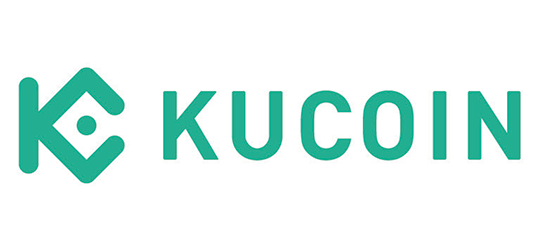
What is Restaking? The New Trend Captivating the Blockchain World
Restaking is an innovative concept that's gaining momentum in the world of blockchain and crypto.
This concept centers around enhancing capital efficiency by allowing users to simultaneously stake their tokens on the primary blockchain as well as other protocols, thereby supporting multiple networks at once. This approach not only provides users with additional rewards for safeguarding more protocols but also involves them in greater slashing risks.
The primary objective of restaking is to simplify the process for blockchain developers to launch new projects without the burden of accumulating their own networks of operators, or validators, and staked tokens to ensure the security of these new systems.
In this article, we'll delve into restaking and explain the mechanics and benefits of ETH restaking.
Back to Basics: What is Staking?
To grasp the essence of restaking, it's important to first understand staking itself. Blockchain security mechanisms are generally classified into two categories: Proof of Work (PoW) and Proof of Stake (PoS). PoS networks secure their systems by having participants commit assets through staking.
In simpler terms, staking process involves token holders who agree to "lock up" or stake a certain amount of your digital coins as a form of security deposit. In return stakers get the opportunity to participate in important network operations.
Depending on the blockchain, these operations could include validating transactions, adding new blocks to the blockchain, or voting on key decisions. Your role in these operations is somewhat akin to being a mini-bank, ensuring that all transactions are legitimate and that the network runs smoothly. In return for your services and for locking up your coins, the network rewards you. These rewards often come in the form of additional digital coins. It's like earning interest in a savings account or dividends from stocks. The more you stake, the higher your potential rewards.
What is Restaking?
To enhance the value and utility of these staked assets, restaking protocols have emerged. These protocols have seen a significant surge in popularity, with the total value locked (TVL) in these protocols escalating from $1.01 billion to over $9 billion since the start of 2024, according to DeFiLlama, with EigenLayer being a major contributor to this TVL.
Restaking enables the reuse of assets that have already been staked on one platform by staking them again on a different one, thereby increasing their utility and potential for earning rewards. Through this method, staked assets can be utilized by additional dApps, creating more opportunities for rewards for both validators and those who delegate their stakes.
Taking Ethereum as an instance, it stands as one of the most secure Proof of Stake (PoS) networks, attributed to its high number of validators and the distribution of staked assets among them. Yet, the ETH staked on Ethereum remains inactive, which resulted in the emergence of liquid staking derivatives.
These derivatives transform staked ETH into tokens that are liquid and can be actively used within the DeFi ecosystem. Furthermore, liquid staking derivatives remove the barrier of minimum staking requirements found in traditional staking, which is 32 ETH, thus allowing smaller investors to participate in staking rewards.
Restaking advances this concept by allowing other decentralized protocols to leverage Ethereum's staked assets to boost their own security measures. Validators and asset holders who participate in this process receive rewards based on the incentive structures of the other decentralized protocol or platform. Consequently, validators and those who delegate their stakes (nominators) benefit from receiving rewards from both the original Ethereum network and the secondary network or protocol where their assets are restaked.
How does Restaking Work? Exploring EigenLayer
In this article, we’ll take EigenLayer as an example, a platform that introduces a new concept in the world of Ethereum, known as ETH restaking. Founded in 2021 by Sreeram Kannan from the University of Washington, EigenLayer is often recognized for its pioneering role in the restaking space.
This platform is essentially a collection of smart contracts that empowers validators to collectively pool their resources and extend their security services to a variety of applications beyond just the Ethereum base layer.
Restaking with EigenLayer means that individuals who have already placed their tokens in staking on supported blockchains can stake these tokens again on EigenLayer without having to withdraw or move their initial stakes. This mechanism is somewhat similar to using the collateral from one loan to secure another loan.
Types of Restaking on EigenLayer
On EigenLayer two main types of restaking are available: Native and Liquid.
With Native restaking, users can directly restake their ETH stake to EigenLayer by setting their validator's withdrawal credentials to EigenLayer’s smart contracts. This method is specifically for those who manage an Ethereum validator node themselves. Validators interested in joining the restaking program must download and operate additional node software necessary for the restaking module, thus agreeing to EigenLayer's restaking conditions, including an extra risk of slashing.
On the other hand, Liquid Staking Derivatives (LSD) restaking involves restaking your liquid-staked tokens. Platforms like Lido and Rocket Pool offer a simpler way to stake ETH, bypassing the complexities and high entry requirements of running your own Ethereum validator. These liquid-staked tokens can then be restaked on EigenLayer, which accepts various liquid staked assets, including Lido's ETH (stETH), Rocket Pool's ETH (rETH), Coinbase Staked Ether (cbETH), and others.
After depositing tokens with the restaking protocol, users have the opportunity to explore different decentralized applications (dApps) for restaking their tokens. These dApps, known as Actively Validated Services (AVS) on EigenLayer, gain access to a security infrastructure through restaking. Validators and nominators in their nodes receive additional rewards, depending on the number of extra protocols they help validate.
According to EigenLayer, its services could potentially support a wide range of systems, including data availability layers, new virtual machines, keeper networks, oracle networks, bridges, threshold cryptography schemes, and trusted execution environments. However, as of the time this was written, these services are yet to be available for restaking.
Restaking controversy: Vitalik is Not Happy about Restaking
Despite the innovative approach of EigenLayer, there is a growing concern that restaking might pose a risk to the stability of Ethereum’s blockchain. Supporters argue that restaking can enhance the security and rewards derived from ETH already in staking, and could contribute to the growth of the cryptocurrency ecosystem in a more sustainable manner, leveraging Ethereum's well-established trust mechanisms. Restaking is seen as a way to extend the trust and security of Ethereum, maintained by its validators, to other projects.
However, Ethereum co-founder Vitalik Buterin and several leading developers express apprehension that restaking could lead to instability, likening it to a precarious structure at risk of collapse. This concern has led some Ethereum developers to suggest a fork as a preventive measure against the restaking platform EigenLayer.
In a May 2023 post, Buterin appealed for caution in not overburdening Ethereum’s consensus or security mechanism, explicitly referring to restaking and EigenLayer. He acknowledged that using validator-staked ETH for multiple purposes is “fundamentally fine”, but using “Ethereum social consensus for your application’s own purposes is not.”
Other Risks of Restaking
The following outlines the primary concerns linked with restaking:
Centralization Risks
Significant worry about restaking is the potential for it to lead to the centralization of stakes. This issue arises because validators who participate in restaking services can provide higher Annual Percentage Yields (APY), making them more attractive to those looking to delegate their stakes. Consequently, this could funnel more delegations towards certain validators, resulting in a concentration of control over the network's stake. Such centralization could undermine the network's impartiality and decentralization.
Increased Slashing Penalties
Restaking introduces an elevated risk of slashing, a punitive action in proof-of-stake blockchains designed to penalize validators who act maliciously or negligently by diminishing their staked assets and temporarily banning them from the network. The augmented risk stems from additional slashing conditions tied to restaking, aiming to balance the higher rewards potential. Given that slashing policies vary across protocols, a validator might face substantial losses due to these enhanced penalties.
Conclusion
The aim of restaking is clear: to bring more value to stakers and other involved parties, including the restaking service providers. Before such technologies, staked assets were locked in a single purpose within one protocol. Restaking changes this by being an efficient way to manage capital resources. It allows stakers to offer their stake for multiple uses and earn extra rewards, as restaking turns staked assets into flexible resources for other beneficial activities. For PoS-staked assets, restaking aims to boost security across several protocols by sharing the PoS security layer. This allows other networks to use this security to improve or build their own.
Remember, this concept is still new, and its full story is yet to be told. Also, this article is not financial advice. Always do your own research and be aware of the risks before investing in any protocol.




























